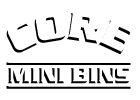Why does 30 Percent of Toronto Recycling Materials still end up Going to a Landfill

Toronto introduced its blue-box recycling program over 30 years ago. As the city’s population slowly has adapted to using the blue box correctly, Toronto’s recycling rates remain not as high as hoped. Why that is is up for debate.
Most residents have at least one misunderstanding regarding a recycling material, unfortunately. For example, just because an item has the recycling symbol does not mean it is recyclable. Alternatively, it is possible for a recycling material to be contaminated which would prevent it getting recycled. Some contamination can also spread to other parts of the blue box, thereby reducing the contents of the entire bin to non-recyclable.
It’s easy enough to know what organic material is and how to sort through that. Non-organic recycling is much more complex though. As the information seems to change every decade depending on what recycling facilities are available, and as manufacturers and corporations change the way they do packaging, it’s tough to keep track of what is and is not recyclable. After all, who has the time to update themselves every time they are faced on a decision of whether to toss away a material as recycling or not – certainly not parents, busy bodies, professionals, or almost anyone.
Contamination is perhaps the Toronto recycling industry’s biggest concern. Food waste can contaminate, of course. It’s not always food waste though. Contamination can mix a whole bunch of non-recyclables in with recyclables, being everything from non-recyclables plastics to non-recyclable paper, thereby contaminating entire bales of plastics or paper.
For example, a wax-lined coffee cup is non-recyclable and when someone tosses it in with a little bit of coffee remaining in the cup, that contaminates the whole bin. This forces recycling facilities to have to forward the bin to a landfill.
According to estimates, Toronto handles 180,000 tonnes of recycling every year through the blue bin program. Of this, 54,000 tonnes ends up sent to a landfill due to contamination. Something as simple as including a black plastic takeout container, a half-empty peanut butter or jam jar, or a grease-stained pizza box with our recycling can completely contaminate the bin. Evidently, there’s a lot which needs to change. Part of it involves Toronto, while a lot of it involves recycling culture as a whole. Of the plastic that has been manufactured, only 9 percent of it’s recycled. That means 91 percent of all the world’s plastic is either in a landfill or in the ocean.
In Toronto, contamination is a major concern and one that is hopefully addressed in the next decade. More manufacturers are switching to recyclable packaging and the recycling movement continues to gain steam in Toronto. As one of Canada’s most advanced waste management and recycling systems, Toronto has got a lot of positives going for it. The facts cannot be denied though. Toronto’s recycling contamination rates is one area that could be improved.
If you need waste management or recycling services in Toronto, contact Core Mini Bins today. We’d love to connect with more households, small businesses, and corporations throughout the GTA to help them maximize their waste’s potential, increase their recycling rates, and minimize their landfill contributions. Contact a representative for more information on how you can improve upon your current waste management numbers!


